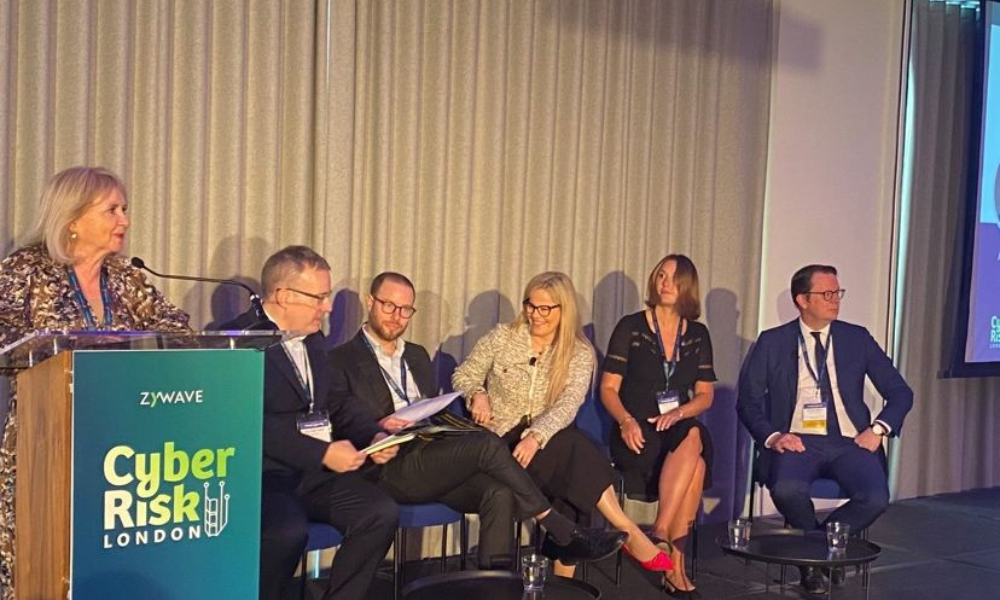What’s behind the maturation of the cyber reinsurance market?

What’s behind the maturation of the cyber reinsurance market? | Insurance Business Australia
Cyber
What’s behind the maturation of the cyber reinsurance market?
Howden Re lead weighs in on what’s happening in the sector
“It’s a very interesting time to be in the reinsurance market and we’ve seen some really seismic shifts in buying behavior during 1/1 which have carried on through the 1/4 renewals. We’ve seen new products come to market and greater adoption of things like event-based reinsurance and cat bonds.”
Offering his insights into what’s happening in the cyber reinsurance market today, during a panel discussion at Zywave’s recent ‘Cyber Risk Summit’ Matthew Webb (pictured center, left), head of clients and strategy, cyber, at Howden Re, emphasized the pace of change happening in the sector. Three out of four of the first 144A cat bonds issued were for event-based wordings, he said, while the market has also seen industry loss warranties and the recent announcement of a parametric-based bond.
“These are all signs of the marketplace maturing,” he said. “As, to the actual state of the market, it’s fair to say that from 1/1 this year, conditions have started to soften. If you reflect on what’s driving that it is really about the economics of demand and supply. From the supply side of things, [market] estimates were that insurance carriers were expected to grow about 20% in 2023, but they actually grew only 5%.”
What’s behind changing cyber re/insurance rates?
Addressing the key factors behind the dip, he noted that the original estimates were made during the “heat of the hard market” in 2022. What actually played out, he said, was that rates trailed off while demand at the front-end reduced as well. Those estimates were missed but reinsurers had already allocated that capacity and capital to write that income, so 2024 plans are based somewhat on higher incomes, resulting in an oversupply.
“On the demand side of things, doing the calculations from 1/1 and the quote-to-shares that were purchased, we hear that sessions were down by about 13.5%, a massive decrease after years of them going up and down a few percentage points here or there,” he said. “Again, reflecting on what drives that reduction and why carriers are willing to take more risk, it’s two reasons really.
“The rates have hardened in the underlying market so there’s more confidence in the attritional and large loss ratios, so they want to retain more of that profitable income. And then there could be something about, because you’re not hitting your top-line GWP, you’re actually closing the gap between GWP and net written premium, which is what actually drives your P&L.”
What lessons has the hard market taught the industry?
It is these dynamics which have come together to lead to rate reduction after years of hardening, he said. Reflecting on some of the lessons learnt from the hard market conditions of recent years, Webb underscored the importance of getting the fundamentals of underwriting done right. It’s about having the right terms and conditions, the right rates, the right line size, and the right levels of underwriting information.
“I think there have been a number of really good lessons learned during the hard market which might be less visible to the frontline transaction,” he said. “There’s been good investment in the broader underwriting teams. You go back to 2019, one or two carriers might have a cybersecurity expert sat within the team now that percentage is much higher.
“That helps make better underwriting decisions, analyze the client better, and train up teams and staff better. The other area that I think is crucial for the cyber industry to get right is early warning signs. If you think back to what drove the hard market in 2019, it was the exfiltration of data in conjunction with ransomware.”
Webb highlighted that what is clear is that underwriters have become much better at utilizing third-party tools, uploading their portfolios into those tools and monitoring insureds in order to get a much better picture of the risk they’re underwriting. There are two key ways in which this is being done, he said, and the first is on a reactive basis as your risk profile changes. Other firms are responding on a proactive basis, reaching out to insureds to pinpoint anomalies and risks before they occur.
“I think that [early warning piece] is crucial for the cyber market to get right,” he said. “Because underwriting is always backwards looking, your pricing is based on what’s happened as are your underwriting questions. So, you do need to be really plugged in so that [you’re able to respond] when things do shift and do change.”
Keep up with the latest news and events
Join our mailing list, it’s free!






